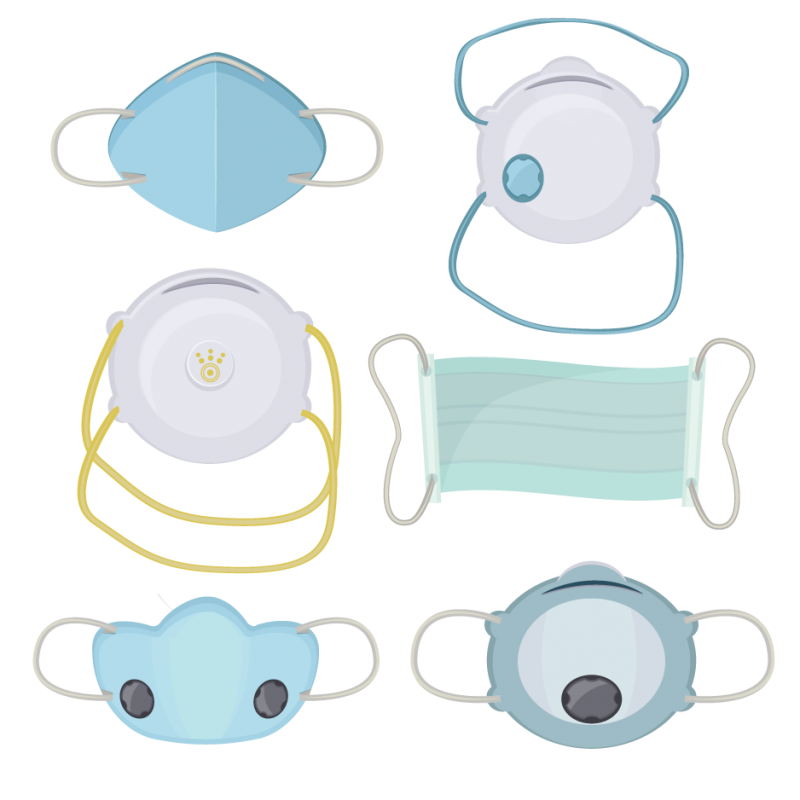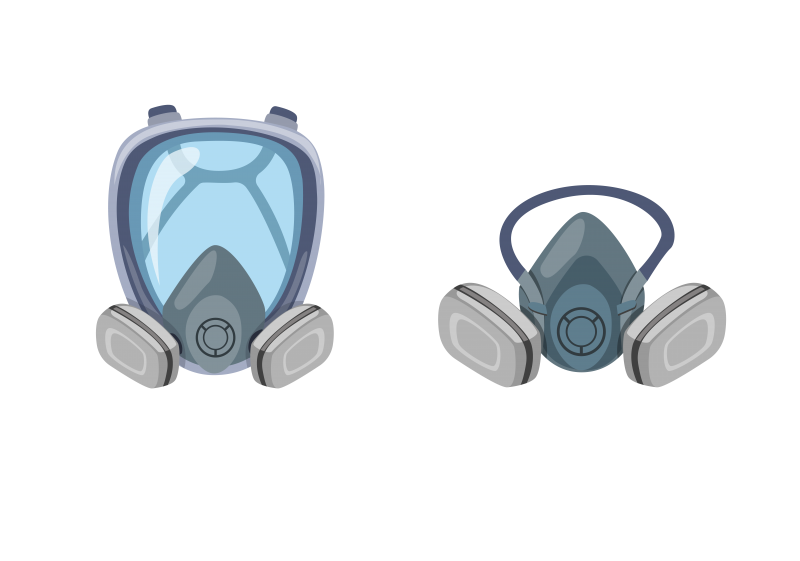Respiratory masks at work

Using professional masks at work
In order to protect own health in particular, wearing a respirator is essential in some work areas. If the mask is not provided directly by the employer or if the employee chooses which mask is worn, the selection of respiratory protection must be known. This ranges from simple face masks to full face masks with different filters.
The right respiratory protection for every job
To protect your own health in particular , wearing a respirator is essential in some work areas. If the mask is not provided directly by the employer or if the employee chooses which mask is worn, the selection of respiratory protection must be known. This ranges from simple face masks to full face masks with different filters.

Mouth and nose protection - for the protection of others
In order to protect your own health in particular , wearing a respirator mask is essential in some work areas. If the mask is not provided directly by the employer or if the employee chooses which mask is worn, the selection of respiratory protection must be known. This ranges from simple face masks to full face masks with different filters.
FFP masks - different filter performance depending on the model
FFP (Filtering Face Piece) masks protect against germs, dust, mist and smoke, depending on the type. As the name particle-filtering half mask suggests, FFP masks filter certain particles and aerosols. Their protective performance is higher than that of face masks. In addition, FFP masks are useful for both external and self-protection. Some FFP masks are available with an exhalation valve, in which case the level of external protection is lower. A major advantage over simple face masks, despite using the same material, is the robustness of FFP masks, which is why they are more durable. However, depending on the labelling, most FFP masks are also a disposable product. The imprint "NR" ("non reusable") on the mask indicates that it should no longer be used after a work shift. However, if an "R" ("reusable") is printed on the mask, it can still be used. FFP masks are subject to the EN 149:2001 and A1:2009 standards and must, for example, filter at least 94% (FFP2) and at least 99% (FFP3) of aerosols, depending on the type.
A distinction is made between FFP1, FFP2 and FFP3 masks. The higher the number, the higher the protective performance of the mask and the greater the types of hazardous substances that are filtered.

FFP masks are used in a wide variety of areas, as they can filter different substances depending on the type. Areas of application can therefore include industrial sectors and craft activities. Whereby the masks can be worn as protection both in horticulture and, for example, in the textile industry.

Half masks - lightweight protection against particles and gases
A half mask encloses the mouth, nose and chin. The eye area is not covered and should therefore also be protected with goggles . A half mask is completely sealed with rubber or silicone so that no gases, vapours, aerosols, dust or smoke can get under the mask. In order to filter the various substances, most half masks have a double filter system where two different filters can be used at the same time. Half masks are significantly more robust and durable than FFP masks.
Full face masks - protection for the entire face
Compared to half masks, full face masks cover the entire face, i.e. the mouth, nose and eye area. Extra protective goggles are then no longer necessary. To protect the eyes, the mask has a transparent visor, which is also scratch-resistant and acid-resistant. As with a half mask, various substances can be filtered using different filters. This makes the inhaled air harmless . Both half and full face masks have a seal, so that no contaminated air can get underneath. The masks are held in place with straps around the head. As there is a risk of the inside of full face masks fogging up due to the visor, exhalation valves are fitted to prevent this.
Insertable filters protect against any hazardous substance
With half and full face masks, the filter types are freely selectable. The respective filter can be inserted via a click system and thus protect against hazardous substances. A distinction is made between particle filters, gas filters and combination filters. Particle filters protect against small contaminants such as fibres, dust, microorganisms or mist. This type of filter is primarily used for work such as grinding, drilling, welding, etc. Gas filters, on the other hand, protect against gases and vapours, which is why they are often inserted into the mask when painting or varnishing. The combination filter combines both particle and gas filter functions. Filters used when wearing a half mask must not weigh more than 300 grams .
If breathing becomes more difficult or the taste in the mouth or the odour in the nose changes, the filter should be replaced at the latest. Expired filters should of course no longer be used. How long a filter can be used depends on several factors:
- Pollutant load
- Air humidity
- Temperature
- Air consumption of the user
All filters are categorised into different filter classes. The decisive factor for the use of a filter is the pollutant present. Especially when working with gases, it is therefore important to know in advance which hazardous substances you come into contact with in order to protect yourself properly . All filter types are categorised into further classes using the numbers 1-3. Compared to protection class 3, protection class 1 offers significantly less protection against certain substances. In addition to the identification of the protection level using the letters and numbers mentioned, there is a uniformly standardised colour system. Each filter has a corresponding coloured ring.
| Particle filter | Gas filter | Combination filter | |||
|
Protection against solid and liquid particles |
partial protection against organic, inorganic and acid gases and vapours, derivatives |
combines protective functions of the particle and gas filter | |||
|
Filter class |
Protects when working with e.g. |
Filter class |
Protects when working with e.g. |
Filter class |
Protects when working with e.g. |
|
P1 |
Rust, iron, dust, pollen |
A1 |
solvent-based adhesives |
A2P2 |
Pesticides, emulsion paints |
|
P2 |
Cement, concrete, wood, paints, varnishes, stone, glass and mineral fibres, bacteria |
A2 |
White spirit, solvent-based paints |
A2P3 |
solvent-based paints, synthetic resin paints, paints containing isocyanates |
|
P3 |
Stainless steel, asbestos, smoke, viruses |
AX |
organic solvents/dichloromethane |
ABEKP3 |
Dangerous goods |
|
ABE |
Sulphur dioxide |
||||
|
ABEK |
Ammonia, liquid manure |
||||
